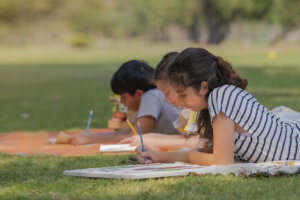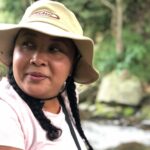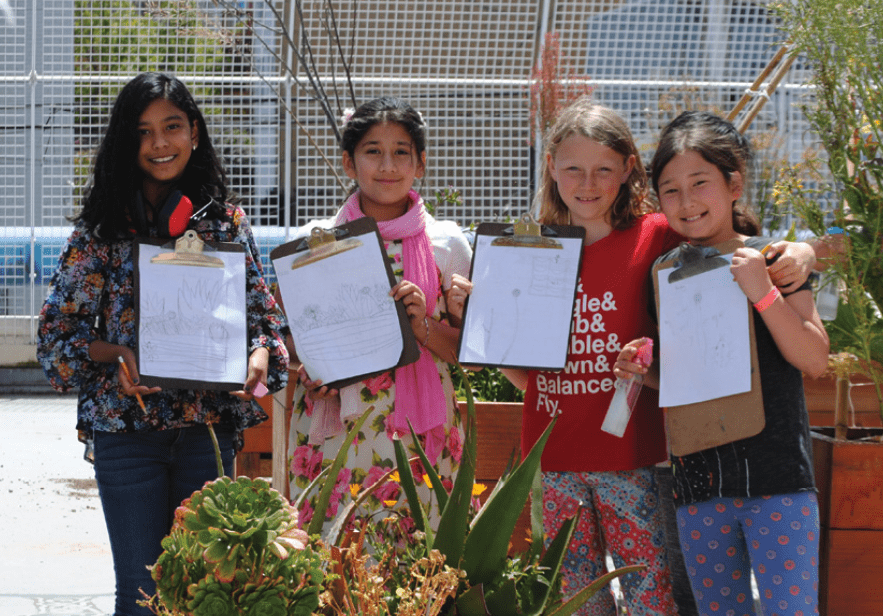I am a science teacher first and foremost, and I view my world through this lens though usually I don’t even recognize it is there. It also means that I ask a lot of questions, but my questions have served me well and invited conversations that have led to places that I never thought I would go—all in the name of science for all students.
When I stepped out of the classroom with the goal of advancing science instruction, I thought I knew how schools worked. After all, my mom is a retired teacher and some of my earliest memories are of writing on chalkboards and dyed purple fingers from the ditto machine. I experienced both public and private schools as a child, public and private universities as a young adult, and taught in both elementary and secondary environments. In other words, I have been in and around a variety of schools my entire life. I felt confident that I knew how the education system worked, but as with most things, “we don’t know what we don’t know.”
Schools, and more specifically districts, are complex living organisms made up of thousands of individuals, and each person has a unique life experience and goals for students. This creates a beautiful tapestry of what students should know and be able to do. The K–12 education system is a microcosm that most have passed through, and our individual experiences in schools frame the way we see school, the larger society, and ourselves.
Understanding the System
Recently I was given the opportunity to talk about the current, and potential, role of K–12 education in addressing issues of cultural relevance in the environmental movement. In my work I have found the most interesting, and upsetting, phenomenon to be that regardless of what is said, an organization’s actions are what really illustrate the belief system of that entity. This brings me back to the idea that if the educational system is the orchestration of thousands of unique individuals, how do individual actions contribute to the beliefs of the system? I believe that because the educational system was not built upon a foundation of addressing cultural relevance it has, to-date, failed to do so. I also believe deeply that there are currently many individuals working under the shared belief that schools are a means of achieving justice for students and their families. When I talk about justice I am talking about social and environmental justice—but the deeper I get into my journey the more I’m thinking about those two seemingly different concepts as one and the same.
I love the community that I serve, however as I look at it objectively I understand that it is unsustainable—both environmentally, and more importantly, socially. This is the conundrum in underrepresented communities and communities of color. The goal of most of the students I serve is to graduate and leave. It stems from the notion that larger opportunities await outside of the community. But if that is the general consensus of the next generation, then where does that leave the community? Something has to change. I believe that changing student mindsets about the community requires that we change the system they are in right now. But system-level changes cannot be made without first understanding the system.
Because the most common experience is via a passive flow through the educational system, it seems that most people (incorrectly) believe that they understand the way the system works. This is often heard through the familiar refrain of “if schools just (fill in the blank), that would solve the problem.” However, my journey of discovery has been rich with many experiences that ended with me thinking, “I didn’t know things worked like this,” and I understand that there are no simple answers.
How to Support Educators Interested In Changing the System
California school districts can be classified as elementary, joint, unified, rural–geographically remote, rural, suburban, urban, or urban–inner city. I currently work in a unified, urban school district. This means that we have both elementary and secondary schools and teach children from ages 4 to 20+, ranging from preschool to adult education. It is largely school board policy and funding that “unifies” these schools. We are governed by a school board (elected members of the community), educators (from the district office to the custodians), and community members. There is legislation that dictates that all communication between these groups be open and available to anyone interested in engaging in dialogue. So, my next question is, who is interested?
This is important because our aim is to make culturally relevant, system-level changes that reinforce environmental literacy as a key founding principal of our science instruction. Understanding our current system allows us to make change possible. It is people that make changes, not programs. Advocacy takes time, and requires a critical mass of people to be interested and engaged. As a classroom teacher I believed that if teachers were committed and involved this would solve the problem. Starting with teachers is good, stopping with teachers and lesson plans leaves implementation incomplete. Even if teachers are interested, they lose interest if they don’t feel extra effort is supported. So, how can the system truly support teachers?
Support can mean a lot of different things, but I’ve come to think about it from two distinct areas: people on-campus and people off-campus. The people on campus range from principals to custodians. Every adult on campus is a potential resource. Of course, principals help by setting a focus for the school that includes project-based learning, environmental issues, and civic engagement. Principals that allow teachers time to plan together, make teachers aware of professional development opportunities, ensure the site participates in shared decision making, and make fiscal decisions demonstrating that environmental efforts are a priority develop teachers that are invested.
Nutrition services, custodians, and maintenance workers support efforts by working with teachers and students on capital improvement projects that students participate in at school sites, e.g., starting a school garden, energy savings campaign, litter removal project, or food waste reduction and recycling programs. These employees do science every day on campus, but are rarely asked to share what they know as part of student learning. They also provide expertise by informing teachers about problems that are within the jurisdiction of the students to solve. The benefits of working with these adults on campus is multifaceted—it not only elicits reciprocal respect but also transforms the culture of the school to be more inclusive. What do they do? What do they see as a challenge? What roadblocks might come up if students were invited to solve these problems? These conversations unlock a shared passion for student learning. For example, in our journey one set of student presentations about water conservation turned into a Maintenance & Operations project that brought in over $100,000 in grants for gardens and groves to over 19 of our schools.
Encouraging Community-Wide Environmental Programming
People off-campus are sometimes a little harder to reach. In “urban”, but not “inner city” communities like mine you won’t find very many—if any—museums or community-based environmental clubs or groups. Does that mean we don’t care about these things? Or, is that a byproduct of a lack of historic cultural relevance in these topics? I believe it’s the latter, so the next challenge is to define your system. Determine who the community is, and what the community cares about.
I started by finding my way to the civic center; I stopped talking, and I listened. The saying, “it takes a village” comes to mind, but don’t expect the village to seek your students out—the village is busy too! But don’t be discouraged, the village is interested! I believe that when reaching out, the conversation is more “I have a dream” than “I have a plan.” Diving into the nuts-and-bolts of how things work in schools is not necessary, and I’ve learned sometimes it is even counterproductive. This strategy of listening first has worked for us: we have brought in growing contributions of over $35,000 to pay for field trips to places that are not usually open to the public, e.g., surface quarries, water treatment plants, logistics centers, agricultural areas, etc. This access to local resources has also resulted in partnerships with invaluable expert consultants, guest speakers, mentors, science fair judges, “real” special projects, and real-world resources.
One benefit of these contributions is that they are community STEM donations, so we can tag the funds. This means they are not added to the district’s general fund, but held on reserve for defined trips. In our district, these contributions are annual, and growing. These community partnerships are especially noteworthy because they make up almost all of the K–12 out-of-classroom science field trips that our schools take, and they all have an environmental literacy focus. With limited museums and nonformal education opportunities, where else can students go? An additional benefit of these trips is that they usually fall within the district boundaries and so are of local relevance to students. This demonstrates to students that they are a part of a natural system, and that this natural system is local and dependent upon them. It communicates that students are influencers.
The people off-campus that make these opportunities possible are active, important partners who advocate within their own organizations to maintain and increase annual contributions and learning opportunities, helping our students achieve mastery of science standards and raising the environmental literacy of students and their families. Developing this network is crucial, as these people and organizations are true community-based environmental advocates with a stake in educating the community. They ask for nothing in return other than to improve the community, and when engaging with partners remember to say “thank you”—student notes go a long way!
Making Environmental Literacy A Priority at the District Level
With so many people interested, where can this go wrong? If you fail to include the district office, then you’re treading on thin ice. You are one district-led initiative away from losing all of your traction. Every district office is a distinct entity. You need the superintendent and the elected school board officials to agree that environmental literacy is a priority, even if it’s not a “priority” in the district’s funding formula. To do that you need all your partners and a lot of passion. How do school board members stay informed about what is happening at the schools? Teachers, administrators, parents, students, and other community members need to attend those very exciting “open and available” board meetings to let them know. There are two major pieces the school board should understand:
- Environmental literacy and science instruction are critical components of K–12 instruction. It’s not something extra to do if we find the time.
- Environmental literacy and science must be supported with funding via the Local Control Funding Formula.
Unfunded initiatives are just cute ideas. What types of expenditures does the district currently fund? What does this say about the district’s belief about the students and community it serves? Who is advocating for this spending? Parents and guardians who have students in the district should share the positive impact that environmental experiences are having on their students. Teachers and administrators should share how focusing on local, relevant topics have changed the way they approach all of their instruction. Community members should share how important it is for schools to focus on environmental issues, and how the schools have become contributing members of the larger community. Everyone must use their influence to encourage this governing body to acknowledge how important environmental literacy is, particularly in underrepresented communities and communities of color. If you don’t say it, they don’t know.
In K–12 schools environmental literacy is always in danger, because science instruction is always in danger. This danger is especially felt in communities of color where illiteracy and failing math scores haunt every conversation. Advocating for environmental literacy means advocating for scientific literacy that is local and relevant. It means that every stakeholder (thousands of individuals) in the system is aware and understands that being able to navigate information about environmental conditions and health hazards is crucial for students’ futures—it’s reading, it’s math, it’s 21st century skills all wrapped up in one package. The importance of emphasizing this in “unsustainable” communities is a recognition that a community’s environmental literacy is an inoculation against community exploitation.
The current role of K–12 education in introducing cultural relevance into the environmental movement is growing, and the potential inherent in this knowledge for culturally diverse communities is revolutionary. Using environmental literacy as a founding principal of K–12 science instruction may not be simple, but with the transition to the Next Generation Science Standards the time is now. It takes a concerted effort to learn about the community you serve, but it is possible, it is worth it, and it’s happening all over the state.
So my final question is: Are you interested enough to invest in your community?










